Everrati Porsche 911
All mod cons
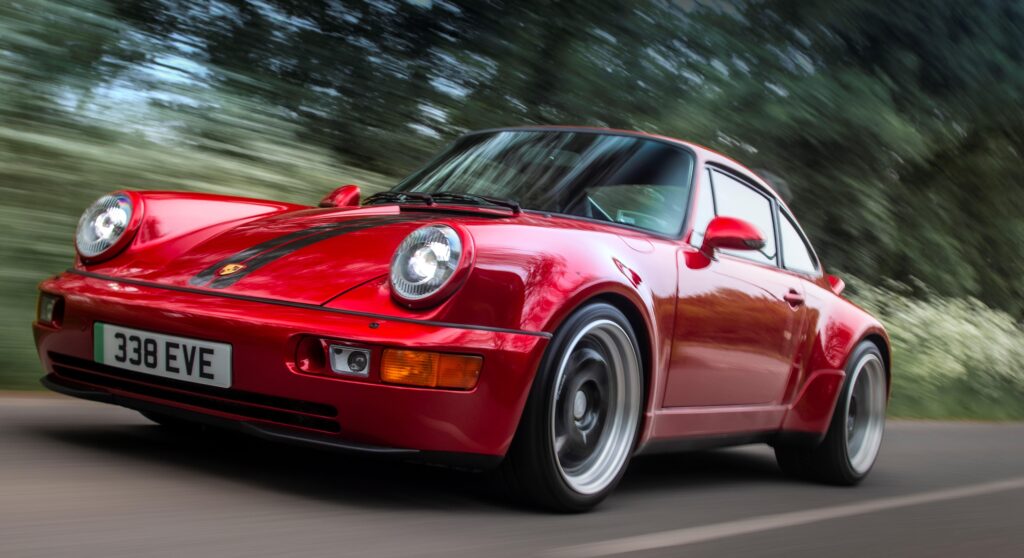
(Images courtesy of Everrati)
Want the authentic feel of driving a classic car without harming the planet? ‘Resto-mod’ company Everrati can help. Rory Jackson reports
The consumer EVs sector is welcoming a constant tide of all-new electric cars, often designed from blank sheets. However, this approach neglects not only the many existing IC-engined cars on the road now, but the countless classic car designs that remain some of the automotive world’s proudest and most cherished examples.
To prevent them from being consigned to museums, more and more people are seeing restoration-modification – or ‘resto-modding’ – of classic cars into roadworthy EVs as the ideal way to prolong the lives of these beloved vehicles while minimising the impact on the environment and people’s health from driving them.
Resto-modding typically entails replacing the original IC engine powertrain with an electric one, and retaining the original body and chassis as far as possible. It is proving popular, although some dissenters decry it as being tantamount to removing much of car’s ‘soul’. Arguably they have a point, as the enjoyment of many such cars is closely linked to their feel and the noise they make.
So, to get an idea of how resto-modding could be accomplished well enough for a fully commercialised electrification service, EME met with UK-based Everrati, the team behind a fully electric conversion/restoration of Porsche 911s (also known as the 964 internally by Porsche) and the company’s current flagship offering.
For a fee, the company takes customers’ Porsche 911s in their Coupe, Targa and Signature Gulf Edition variants, and outfits them with all the necessary parts for a high-performance EV.
Company history
As Nick Williams, co-founder and COO of Everrati, recounts, “We started the project just over three years ago, after I’d been talking to a friend who was as interested as I was in breathing new life into classic cars. At first, we were looking at either a Jaguar E-Type or a Porsche 911 as the ideal cars to start with.”
Williams quickly encountered a wide range of potential challenges in his quest to achieve fully qualified and certifiable electric resto-modification. First, a car had to be sourced, then experts in design, components, engineering and testing had to be found and convinced to take on the risk of the project. Perhaps the stiffest challenge of all though was that targets for output quantity and quality had to be specified, despite this being a mostly unregulated sector.
“Even so, based on all those unknowns, we decided that there was actually a great opportunity here. There’s a huge audience watching the EV-resto-modding space, waiting for someone to take the leadership on making EV resto-mods as purchasable products rather than just conceptual demonstrator builds made from odd elements here and there,” Williams explains.
The team quickly determined that there were no suitable companies or subsidiaries they could buy up to turn into an EV resto-modding workshop, and they would therefore have to set up their own facilities for design, integration and manufacturing from scratch.
By coincidence, Williams and his friend also had a mutual friend and highly successful entrepreneur in Justin Lunny (now Everrati’s CEO). Lunny had also been motivated to enter the EV space, owing to the publicity surrounding the Jaguar E-Type Concept Zero and his daughter’s fears over the Earth’s fate should global emissions fail to be curbed.
“So the three of us got talking, and decided some key points,” Williams says. “One: restoration didn’t need to be done in-house, but electrification definitely did. Two: if we wanted to sell a road-ready-EV resto-modding service to an ultra-high net worth clientele, we needed to take ownership of all the procurement, integration and maintenance work, through to a safe, fully qualified and validated conversation and restoration.
“We needed a customer, even one without their own donor vehicle, to be able to just point at our brochure to the model and colour they wanted, and then we’d just hand them the paperwork and the keys.”
Subsequently, the three quickly worked to amass the right team for making a resto-mod that would contain exactly the right powertrain for the chassis, and drive and sound as if it had been made by Porsche 30 years ago.
They started with Mike Kerr, now director of engineering at Everrati and a Porsche 911 owner and enthusiast with extensive engineering experience across OEMs including Cosworth, McLaren and Lotus.
“By and large, our engineering strategy has always been to accelerate the traditional vee-model development process, chopping-off the bottom of the ‘vee’ by using existing, OEM-validated components,” Kerr explains.
“We’re not yet in the business of developing and building our own batteries, inverters and so on, but we want to make sure we’re using safe components that comply with regulations, with only minor changes to electric subsystems here and there, broadly to maintain the feel of the classic cars we love while also making a top-of-the-line EV.”
Development history
The standard-issue (‘Pure’ edition) Everrati Porsche 964 is a wide-body coupe, capable of 0-60 mph in 4.5 seconds, producing 440 bhp (328.1 kW) and giving 180 miles of range on its 52.8 kWh battery pack, or more if driven conservatively and without crosswinds.
A Signature edition is also available, which at £250,000 (not including taxes and the donor car) costs 25% more. It can reach 60 mph in just under 4 seconds, output 500 bhp, and has an expected range of 150 miles between charges.
These cars constitute the second iteration of the Everrati project. The prototype was a narrow-body Targa, which was never commercialised but proved enormously useful in informing the company’s in-house competencies in integrating electric powertrains into a defined and restrictive set of chassis and noise requirements.
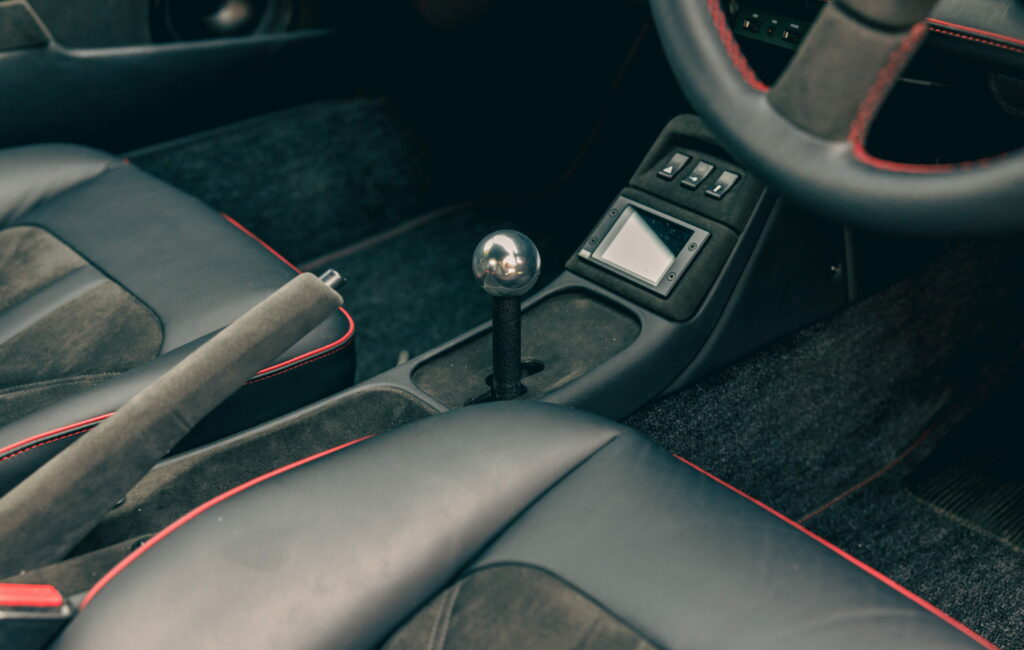
“The Targa had a much less powerful drivetrain than what we have now in our 964 Coupe,” says Williams. “In fact, our Coupe exceeds the power output of the original 911 by some margin, yet found over time that the classic Coupe chassis handles power really well.
“On top of that, you’ll see many new things throughout the car, such as LED lights, uprated suspension, heated seats and heated windscreens, all aimed at addressing the ownership problems that the old 911 had. Most resto-modders focus on just aesthetically moving it backwards, but we figured that since no-one’s going to find their driveways covered in oil first thing in the morning any more, we’d put in a ton of other changes that really make the car so much more reliable and driveable.”
To hit the fundamental project targets, as well as maintaining the inertia and resonances of the vehicle, Kerr needed to use the original 911 chassis without modifications. That strictly defined the packaging volumes and hence the mass distribution and architecture for the powertrain he and his team needed to design.
“The batteries for example are split into two packs: a smaller one at the front and a bigger one at the back, with the rear pack coupled with the OEM drive unit we use,” Kerr explains. “Both are mounted on the chassis using the original Porsche 911’s transmission and engine mounts, but a bit further forward for a slightly improved polar moment of inertia.
“The power electronics are packaged in the front of the vehicle. There you’ll find the onboard charger and the cabin DC-DC converter, and it’s worth noting that we’ve managed to maintain enough luggage space for a flight suitcase in the front as well.
“Meanwhile, both battery packs are kept well outside the original vehicle’s crumple zones, which really enables us to fast-track the certification and hence production of our vehicles.”
That has resulted in an overall weight of 1440 kg, versus the 1450 kg of the original 911 Turbo, but with the same front-to-rear mass distribution of about 39/61%.
Battery architecture
The 360 V battery packs collectively comprise 24 modules, eight in the front box and 16 in the rear. Each module stores 2.2 kWh, has a capacity of 150 Ah and supplies a nominal 14.5 V, with 12 prismatic lithium-ion cells arranged in a 4S3P configuration.
Kerr comments that the electrical architecture and construction have been designed for compliance with R100 regulations, with certification underway to Part 1 of the standard for production purposes. “The pack split was done for weight distribution, not safety, but each pack does have its own contactors and HVIL for safety reasons,” he says.
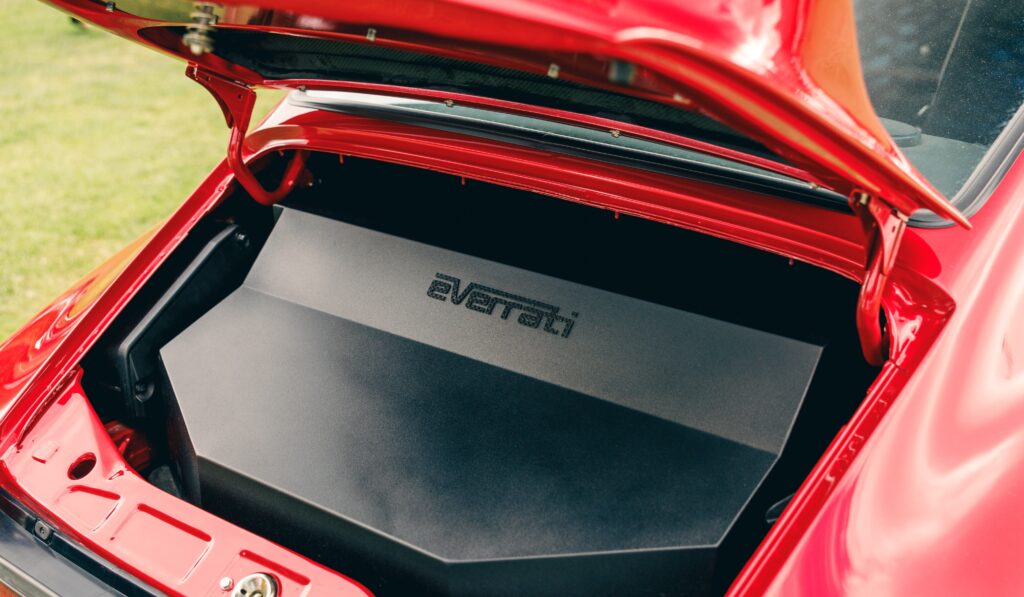
The packs share a single liquid-cooling circuit. Bespoke aluminium cooling plates are installed at the pack level, along with silicon-based thermal transfer pads at the module level. Each module has a temperature sensor, and has been simulated to identify both its cooling capacity respective to performance limits and where hotspots have the potential to form.
“Our battery assemblies have undergone extensive cooling plate characterisation testing, at both the module and pack level, to validate a safe performance envelope, with further structural assessments of the mechanical housings and battery frames undertaken via CAE,” Kerr adds.
BMS and charging
The battery energy can be replenished through Type 2 AC charging or DC fast charging, via a CCS2 combined charging port seated at the original fuel filler bowl’s location (a CCS1 charger will be made available in the first quarter of next year).
For the former option, a 6.6 kW onboard charger from Electric Conversions is installed to provide a maximum continuous recharge of 6 kW, with a maximum AC charge duration of 7.5 hours. The latter option takes 40 minutes at most, with a 70 kW expected charging power input, although that will vary with the battery voltage.
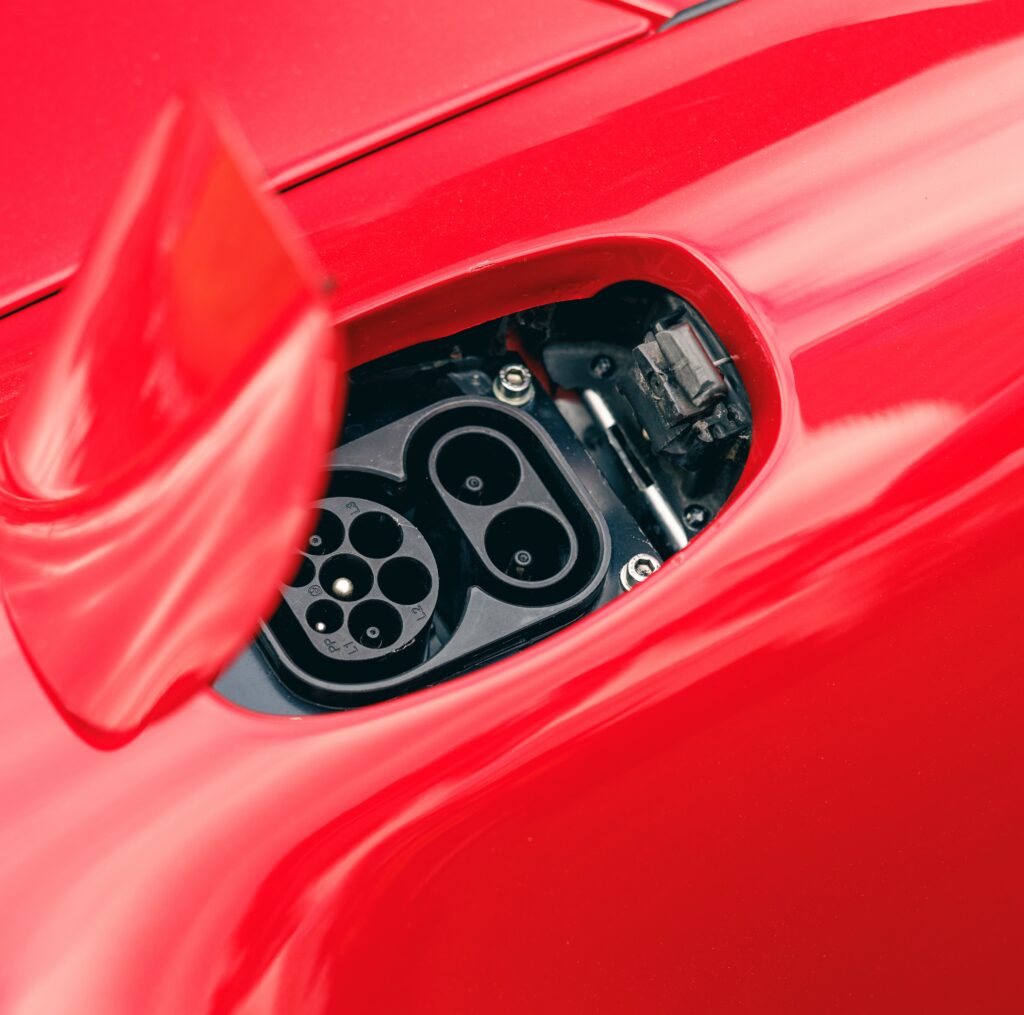
Kerr adds that the BMS software is programmed with progressive limitation and control of charge/discharge speeds when the packs are at a low SoC, with a curve that drops sharply outside 10% and 90% charge levels.
The BMS also encompasses a temperature controller for managing the separate liquid cooling circuits, pumps and fans for the battery and the motor and inverter. It also monitors and protects each module independently for temperature, voltage, current, internal resistance and faults. In addition to isolating for faults detected, it will carry out smart cell balancing to equalise the SoC across all modules.
Traction and suspension
Everrati’s drive unit uses an OEM-validated design containing a three-phase AC induction motor, producing 328.1 kW on the standard 964 and 372.8 kW on the Signature edition. Control comes from an integrated inverter, and as indicated a second liquid-cooling circuit thermally manages the drive unit.
As Kerr notes, the iconic behaviour and performance of the 964 comes not just from its powerplant but how it puts its power onto the road. That is managed by a single final-drive gear reduction, which is fitted with a torque biasing differential from Quaife to help keep the car planted during sharp cornering.
“There are some flexible features of that differential that we can set up accordingly, such as the preload across the differential or the torque biasing ratio, to suit the user’s application or driving conditions,” Kerr adds.
A bespoke control board has also been fitted to the inverter, using the same original OEM function control strategy, while also allowing wireless logging, diagnosis and control of the drive unit’s operating parameters.
“We’ve had quite a bit of help from Tim Harvey [British motorsport driver and 1992 British Touring Car Champion] in iterating the control responses in our software – in fact a fair amount of the rest of the engineering, given his extensive experience with Porsche cars,” Kerr explains.
Williams adds, “If you ever owned a Porsche 964 Turbo, you’d remember that its power delivery was brutal. It would wait for the boost to come on, then all hell would break loose in the back. It was worlds of fun to drive but very, very tricky to manage.
“When you have an electric motor controlled via an inverter and ECU, you can achieve such a linear power delivery: it engages the second you touch the accelerator but holds power so well without any spikes. So this powertrain means all the petrolheads who test-drive our car, with initially very dubious looks on their faces, still get all the fun of a 964 – 0 to 60 in 4 seconds, and relentless power, without the performance drawbacks of the old IC engines.”
As mentioned though, maintaining the analogue feel of the original 964 was a crucial requirement Everrati had of all the partners it worked with, something that was of major importance when choosing the suspension.
“We have an adjustable suspension on the Signature version of the car, which was made by a company called TracTive,” Kerr says. “That really allows us to modify the damping – the yaw stiffness, roll stiffness and each of the damping rates in the corner of the vehicle – to make the car quite flexible and adaptable for driving on country roads, track driving and so on. The adjustability on those dampers has been really helpful in trying to establish the set-up of the car.”
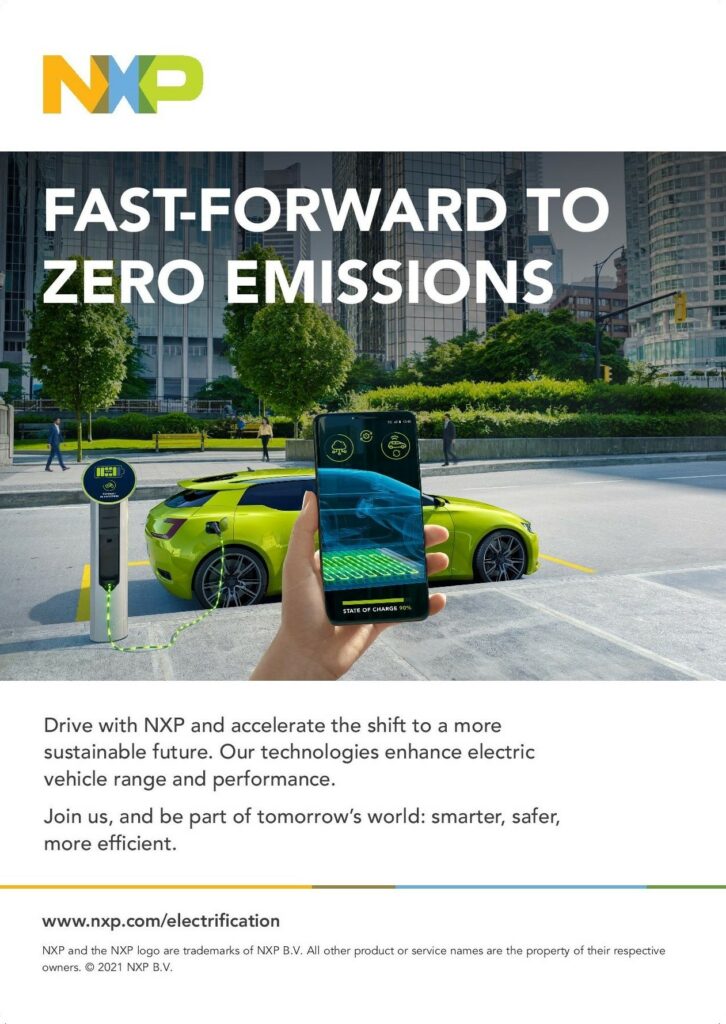
Driving modes and technologies
On the driving experience, Williams says Everrati’s most important reviews are those reporting that the car ‘still sounds and feels like an original Porsche 964’.”
Kerr says, “As far as driving is concerned, we’ve always kept a core focus on maintaining the analogue feel, feedback and driver engagement in the vehicle controls. We really wanted to make it the most analogue EV ever.”
To preserve that feel, the power-assisted steering pump, brake pump and other control parts (both interior and exterior) have been kept in place, but have been changed to electrically powered units. The motor controller delivers the power and signals for regeneration, as this takes place in the motor independently of the mechanical brakes.
The company is also developing a dedicated vehicle control unit (VCU), which will process and distribute the driver’s inputs to the BMS, inverter, steering pump and brakes, as well as toggling the volume and crescendos of the sound generation system, known as the augmented sound generator (ASG). This sits in the back of the car and recreates the original motor sounds of the classic 911; it is built around a 105 dB subwoofer.
Initially this was installed just for fun for an electric car show in London, where every other car was bound to be deathly silent. “We soon realised though that the ASG actually restored a lot of the original car’s feel in NVH terms,” Williams remarks. “The speakers get the steering wheel and seat vibrating almost exactly as if you had a 3.3 litre M30/69 turbo flat-six in the back.”
The bespoke sound track is modulated in real time, and it tracks linearly with the power delivery. However, Kerr is currently programming the sound system to account for torque interruptions as well, for example owing to emulated gear changes. These will be mapped from the motor controller to ensure the correct ‘blips’ of power reduction to emulate the output ripples of gear shifting.
“We’re looking to implement a virtual geared system,” Kerr says. “Although we currently have just one physical, mechanical gear, we will have simulated gear change points, probably based on throttle demand, vehicle speed and motor speed. We’ll also keep the original gear lever for ergonomics’ sake though; either way we want those shifts to be reflected audibly.”
Williams adds that since the speakers are simply playing sound files to provide a feeling of familiarity to reluctant adopters of EV resto-mods, future updates might include the sounds of other car engines – or even aircraft or fictional spacecraft.
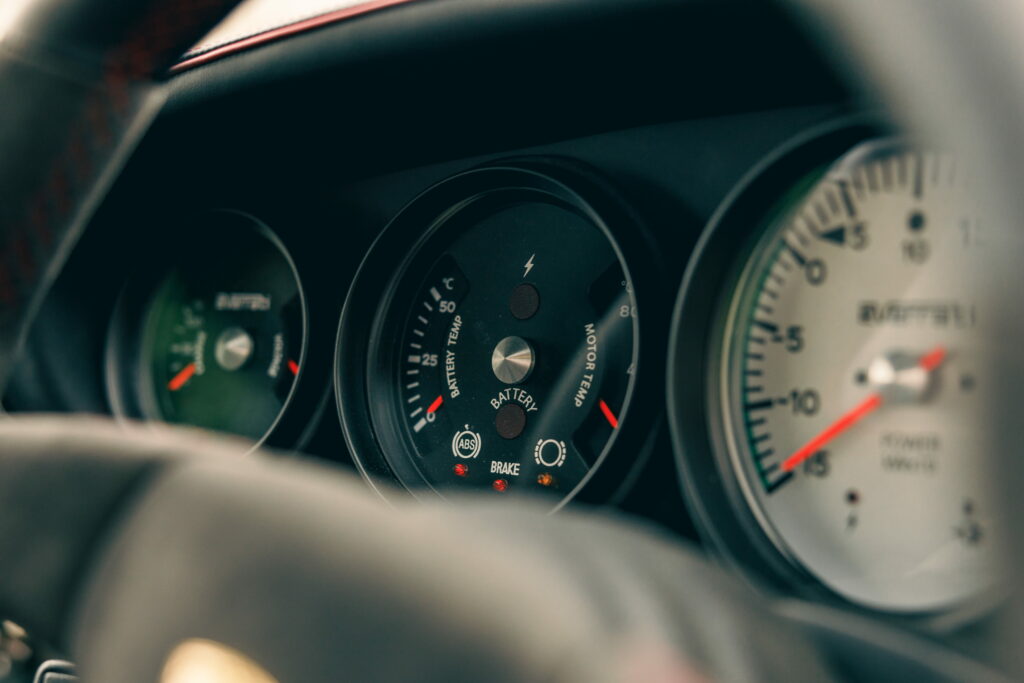
“There’s also a striking presence the car creates if you whizz past someone while completely silent,” he muses. “I honestly think even the biggest petrolheads will turn off the ASG in the long run.”
The VCU will open up further opportunities in terms of higher or more complex safety functions for the BMS and inverter, as well as additional drive modes, of which the Pure edition 964 currently has two. These are a Standard mode and an Eco mode, the latter featuring significantly reduced discharge rates and higher regeneration rates (depending on the SoC) across the range of operating speeds.
“Through the VCU, we could also remotely add firmware for adaptive cruise control, or maybe a Race mode in which we could change the rear-wheel gain, or have the regen and throttle delivery purposely lose traction at the rear when you want to,” Kerr suggests.
To track speed, distance, SoC and other values with the same aesthetics and behaviour of the original sportscar, a bespoke gauge cluster has been designed and supplied by UK companies, with all-analogue dials and meters across the dash, driven by CAN bus measurement data from the BMS and motor controller.
“For example, the power gauge dynamically tracks how hard your right foot is on the accelerator pedal, the speedometer is essentially identical to the original, and we have an OLED display for showing various subsystem diagnostics, system warnings,” Kerr explains. “The old engine water temperature dial now shows battery temperature, and we’ve kept the old analogue warning lights as they were but they now correspond to key parameters tracked by the BMS.”
Environmental control is achieved through an HVAC system built around a 2.2 kW positive temperature coefficient heating element. While that is powered by the high-voltage system, all of the driver systems are powered by the DC-DC converter, which steps the battery’s 360 V down to 12 V for the gauges and controls.
Future Everrati models
With widespread acclaim for the 964 EV among e-mobility engineers as well as classic car lovers, Everrati is moving forward with its next projects. The first is a resto-mod of the Ford GT40, most famous for its win at Le Mans in 1966.
“If ever there’s a car that needs both high power output and precise NVH recreation for accurately emulating how it felt to drive, it’s the GT40,” Williams remarks, alluding to the dual-motor, 800 bhp, 800 Nm powertrain he and his company will equip the vehicle with. It will closely resemble the one in the 964 – a deliberate choice on Everrati’s part to minimise r&d costs for subsequent projects.
“There’ll be other changes for the GT40 too, such as transducers inside the seats to replicate the rumbling, physical crescendo of that car’s fuel powertrain,” Kerr notes.
It will also integrate a 46 kWh battery pack, liquid-cooled and supplying power over a 700 V bus.
More recently, Everrati has announced it is resto-modding the Land Rover Series IIA as well. It will have a 60 kWh battery pack and a 150 bhp, 300 Nm powertrain with both two- and four-wheel-drive modes.
The company has also worked extensively on a resto-mod of the pagoda-roof Mercedes-Benz W113 SL. Still regarded as one of the most beautiful cars ever made, Everrati’s version will be fitted with a 180 bhp, 550 Nm AC motor and enough battery energy for 160 miles between charges.
With all three vehicles now available for pre-order, Everrati looks set to return a stunning collection of cherished icons to 21st century roads.
Specifications
Porsche 964
EV resto-mod
Weight: 1440 kg
Three-phase AC induction motor
52.8 kWh lithium-ion battery pack
AC and DC charging
Standard/Pure edition
Narrow-body coupe
Top speed: 130 mph
Power: 440 bhp
Torque: 460 Nm
Range: 180 miles
Acceleration: 0-60 mph in 4.5 seconds
Signature edition
Wide-body coupe
Top speed: 130 mph
Power: 500 bhp
Torque: 500 Nm
Range: 150 miles
Acceleration: 0-60 mph in just under 4 seconds
ONLINE PARTNERS































